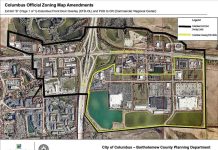Telecom companies in Indiana are gearing up to expand broadband Internet to rural communities they have historically bypassed, thanks in part to $306 million in grants they’ll receive over six years from the Federal Communications Commission.
The agency last month deployed the first funds, which come from its Connect America Fund, to Indiana operators AT&T, Frontier and CenturyLink. It’s part of a $1.5 billion infusion nationwide that will subsidize the build out of broadband in areas — including towns of a few hundred people — that were previously deemed as unprofitable.
“This does not cover everything, but this was where the biggest problem was — the rural areas of these large carriers,” FCC spokesman Mark Wigfield said in a phone interview. “So it is going to go a long ways toward connecting them.”
About 585,000 Hoosiers don’t have access to speeds of at least 10 megabits-per-second downstream and 1 mbps upstream, according to the FCC. That’s about 8 percent of the state’s population.
The $51 million per year tagged for Indiana could reduce the figure by about 270,000 people, the FCC said. All told, 135,000 business and residential locations could be affected.
Frontier got $22.8 million for its Indiana operations. AT&T and CenturyLink got $17.6 million and $10.7 million, respectively.
The FCC said the funds may only be used in areas where there is no competing Internet service provider, and the companies have to cover any costs above the grants. The FCC said the companies must be finished with 40 percent of their total build out by the end of 2017, 60 percent by 2018, 80 percent by 2019 and 100 percent by 2020.
The companies will receive grants of about $51 million a year in Indiana through 2020. In all, telecom companies will receive $306 million in the state and $9 billion nationwide. Funding for the Connect America Fund comes from taxes on the phone bills of American consumers.
Throughout the next six years, the money will not only subsidize construction costs but also consumer bills. In an email, Wigfield said it will help cover “deployment and ongoing support in order to make the consumer bill roughly comparable to the national average: $52.50.”
Ball State University professor Michael Hicks said the program’s effectiveness may vary by area. By living in rural areas, he said, many residents have accepted that they won’t have robust Internet access. They may even be unwilling or unable to pay for home Internet service even if it’s provided.
In other places, the investment could create or enhance broadband access, benefiting schools, libraries and small businesses that need to process credit card payments, for instance.
Whoever the program benefits, it would only do so temporarily.
“Whatever dollars we use to provide telecommunications to rural places, we’re going to face this problem again in five years, seven years,” Hicks said.
“So this is never a permanent fix.”




